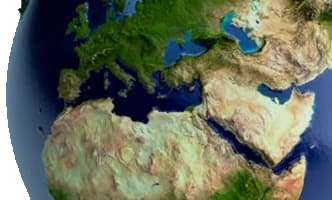An important outcome of the Conference was the adoption of the Strategic Plan for Biodiversity for the Period 2011-2020, aimed at reducing biodiversity loss and restoring the natural environment. The Plan includes twenty targets on how to achieve the overall objectives. This result is a big success and an important step in the history of biological diversity protection, considering the latest indications showing that efforts and commitments to protect biodiversity and reduce its harvesting had been failing.
The targets, known as “the Aichi Targets” – as the Plan is named, include an extended designation of marine protected areas to 10%, and an increased designation of natural reserves to 17%, in order to help halve biodiversity loss. In addition, CBD signatories are required to develop biodiversity plans at state level. Other targets aim at a sustainable use of natural resources and the development of more effective capacity- building mechanisms.
The land area target was considered by some as low, given that some countries are already very advanced and successful in designating and protecting land areas resulting to a 13% of global land already being protected. On the other hand, the marine area protection target give an optimistic hope, given that today, only 1% of marine areas are protected.
Another big breakthrough result of the Conference was the adoption, after 18 years of intensive negotiations, of the Protocol on Access to Genetic Resources and the Fair and Equitable Sharing of Benefits Arising from their Utilization to the Convention on Biological Diversity, now known as the Nagoya Protocol. The Protocol lays down ground rules on the way nations should evaluate and share those benefits and ensures that indigenous and local communities benefit from the use of natural resources within their territory or under their management. The adoption of an Access and Benefit Sharing (ABS) regime had been a condition for some developing countries, in order to remain engaged with the CBD. The text of the Nagoya Protocol was nevertheless disappointing for many developing states which expected stronger commitments by developed states. The general feeling of developing states was of compromise, in order to avoid standing in the way of the instrument being adopted. The Nagoya Protocol will enter into force in 2020, if ratified by signatory states to the CBD.
Finally, the COP ended with the adoption of another very important text, the Strategy for Resource Mobilization for the implementation of both the Strategic Plan and the ABS regime. The Conference was not able to decide on a specific funding plan or on a specific amount needed for the implementation of the abovementioned agreements; however, it was agreed that such a plan be drawn by 2012. Ensuring adequate financing was considered essential in the success and achievement of the CBD objectives, and rules for increasing international funding for biodiversity were included.
The adoption of all three documents after long negotiations during the COP meetings that ended at 3am on the 1st November was considered very successful. On agreeing the Nagoya Protocol, some states pushed for an adoption of all three agreements as a package, as they believed them all to be interdependent. However, it was decided that each document would be considered for adoption separately in order to allow developing states to note their discontent on the ABS regime outcome. It remains to be seen whether the instruments will be ratified and successfully implemented by CBD members in order to achieve their objectives.
Source: CBD Secretariat / COP 10, IUCN
For further information:
http://www.cbd.int/cop10/
http://www.iucn.org/cbd/meetings/nagoya_2010/?6406/Deadline-Life–Nagoya-defines-future-for-life-on-earth
http://www.iucn.org/about/work/programmes/species/our_work/cbd_cop10_nagoya/
About the author

MEPIELAN Centre
MEPIELAN Centre is an international research, training and educational centre established by Professor Evangelos Raftopoulos at the Panteion University of Athens in 2008.
Before its establishment as a University Centre, MEPIELAN operated as a successful international research, training and informational programme (2002-2007) under the scientific direction of Professor Evangelos Raftopoulos and the aegis of the Panteion University of Athens, supported by the Mediterranean Action Plan/UNEP and the Greek Ministry of the Environment, Physical Planning and Public Works.
MEPIELAN Centre is an accredited UNEP/MAP PARTNER (since 2013), a Member of the Mediterranean Commission on Sustainable Development (MCSD) (since 2016), and a Member of the Steering Committee of the MCSD (since 2019).
On 22 May 2022, MEPIELAN Centre proceeded to the development of MEPIELAN as a Non- Profit Civil Organization (INGO) for the more effective and efficient advancement of its Goals and Missions and furtherance of its activities. MEPIELAN Centre as a Non- Profit Civil Organization (INGO) is registered in Greek Law (Hellenic Business Registry, Reg. No. 16477300100) in accordance with Laws 4072/2012 & 4919/2022 as applicable


